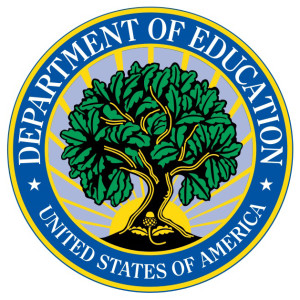 The US Department of Education recently held its sixth annual “Back-to-School Bus Tour. This “Ready For Success” tour lasted five days beginning on September 14th. The tour included multiple stops across Missouri, Iowa, Illinois, Indiana, Kentucky, Ohio and ended with a stop in Pittsburgh, Pennsylvania. The purpose of the tour was for senior members of the US Department of Education, including Secretary of Education Arne Duncan, to celebrate and witness the ways in which states and smaller regions of the state are preparing their students for higher learning, as well as aiding them in creating opportunities for themselves.
The US Department of Education recently held its sixth annual “Back-to-School Bus Tour. This “Ready For Success” tour lasted five days beginning on September 14th. The tour included multiple stops across Missouri, Iowa, Illinois, Indiana, Kentucky, Ohio and ended with a stop in Pittsburgh, Pennsylvania. The purpose of the tour was for senior members of the US Department of Education, including Secretary of Education Arne Duncan, to celebrate and witness the ways in which states and smaller regions of the state are preparing their students for higher learning, as well as aiding them in creating opportunities for themselves.
One of the attendees of the bus tour was Matt Presner, a Teaching Ambassador Fellow at the U.S. Department of Education. According to Presner, one of the highlights of the tour included seeing two universities where, “students with disabilities are not just enrolled in college, they’re thriving, finding success academically and socially in a way that many never could have imagined.”
The two universities included in these observations were the University of Central Missouri and the University of Illinois Urbana-Champaign. Melody Musgrove, director of the Office of Special Education Programs claimed that neither university simply complied with regulations, instead, the director claimed that these universities provided an ; “on-ramp to the rest of our kids’ lives.”
It’s easy to understand Musgrove’s enthusiasm for the programming and support that these universities provide for their students when you consider the facts. Youth with disabilities are significantly less likely to enroll in a four year college than their counterparts in the general population. Considering the increase that society and employers place on attaining education post-secondary school, it’s no surprise that this puts these young people who don’t enroll at a disadvantage.
However, the success stories coming out of these two schools prove once again that students with disabilities can thrive in four year colleges, and that these numbers of low enrollment should change. Both of these universities offer programs that provide support to match the individual needs of these students, while respecting the freedom, intelligence and independence of these young adults.
In years to come, hopefully more institutions of higher learning will provide the tools that can help enable these students to harness and share their strengths and gifts with the rest of the academic community. There exists a need for these academic communities and society at large to change so that it can see the immense talent and undeniable value that these students bring and contribute to the community.